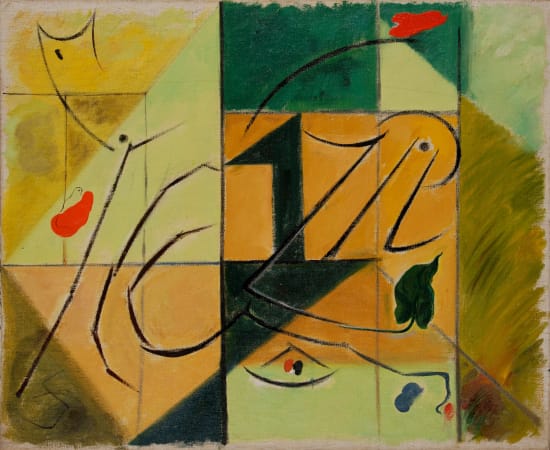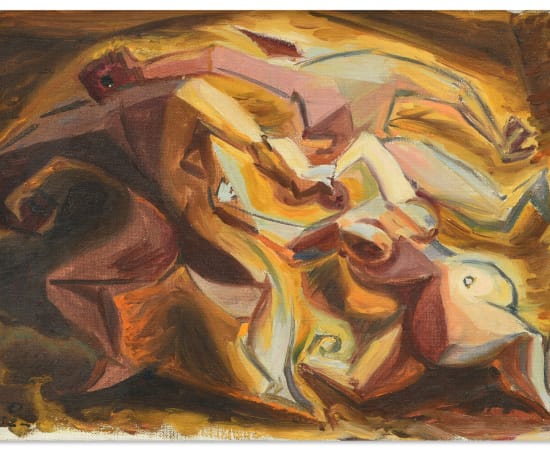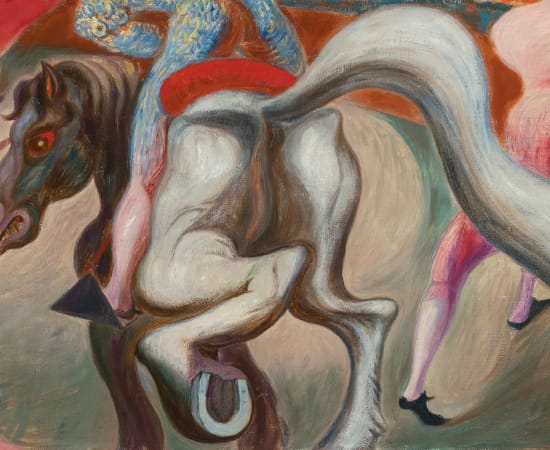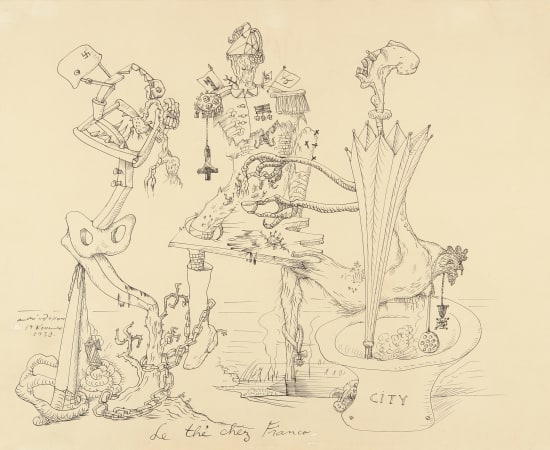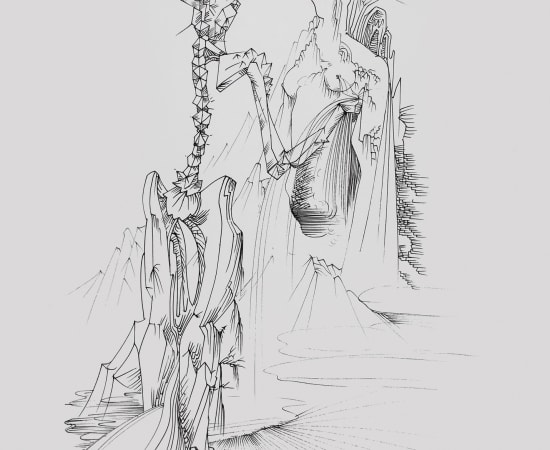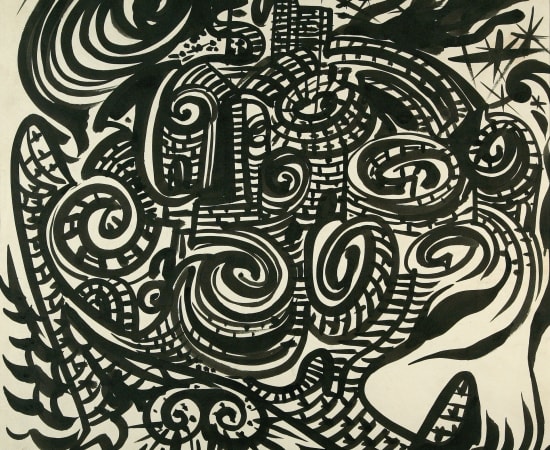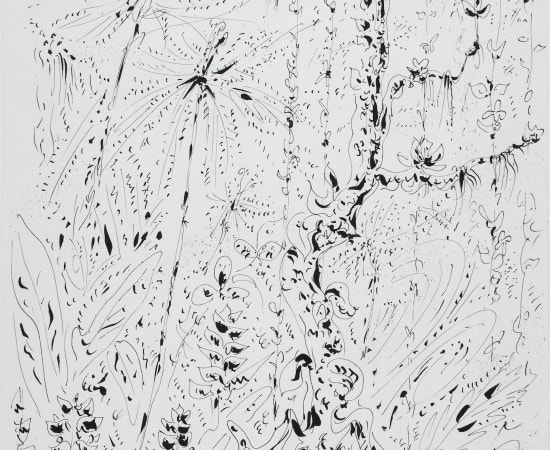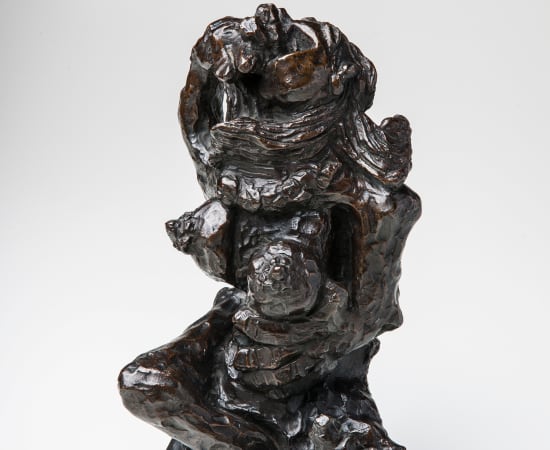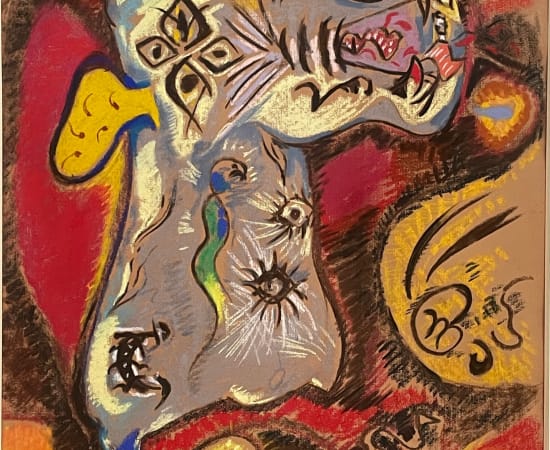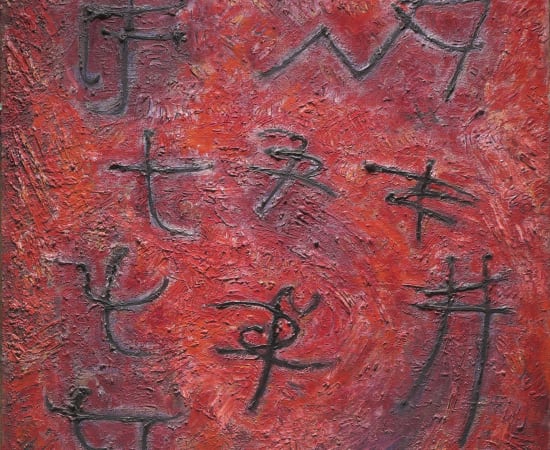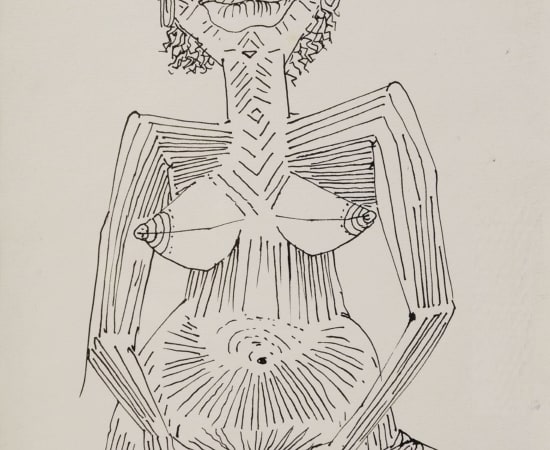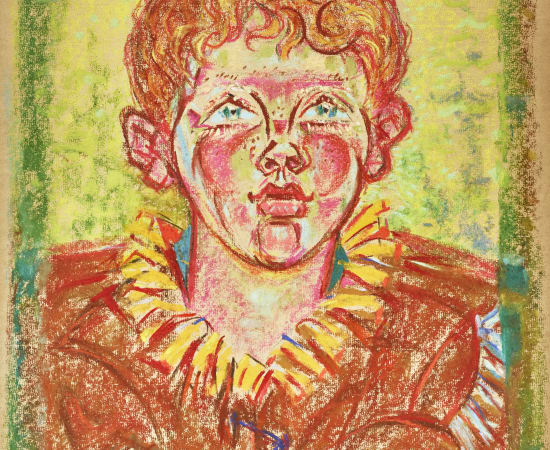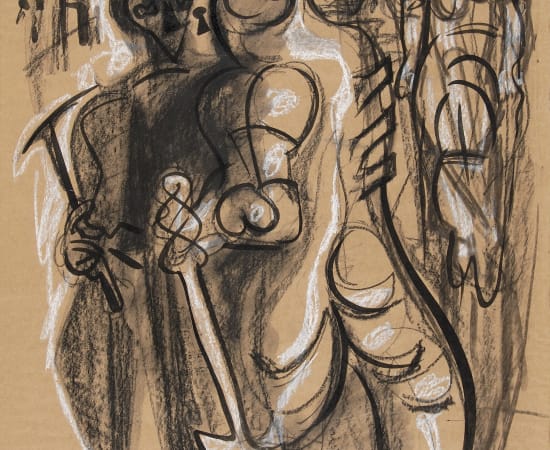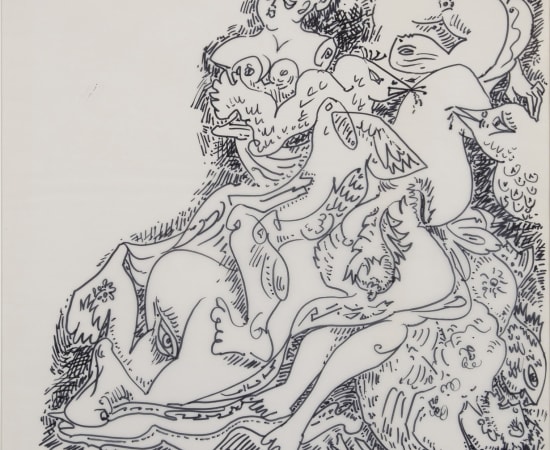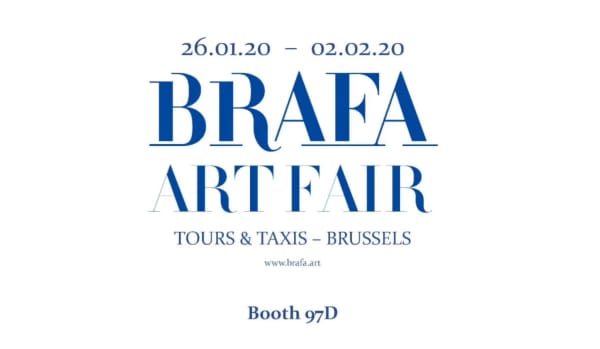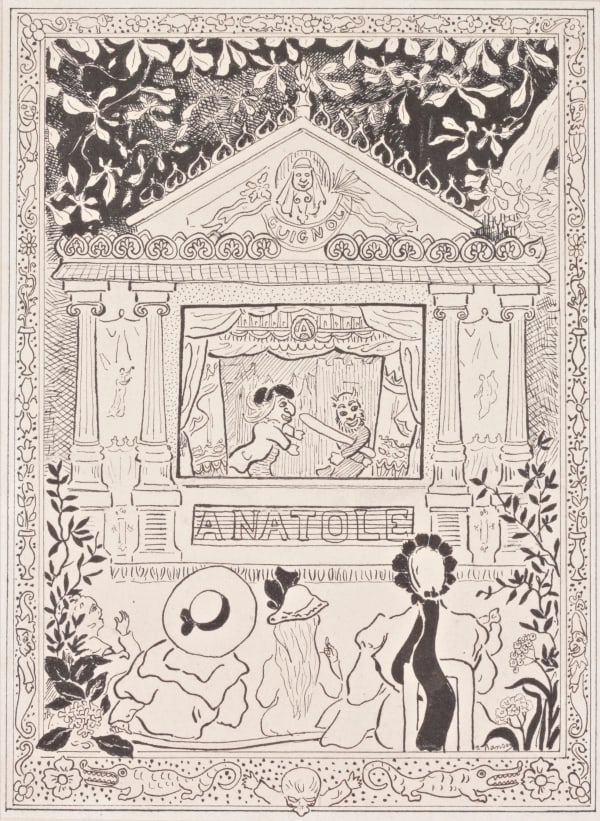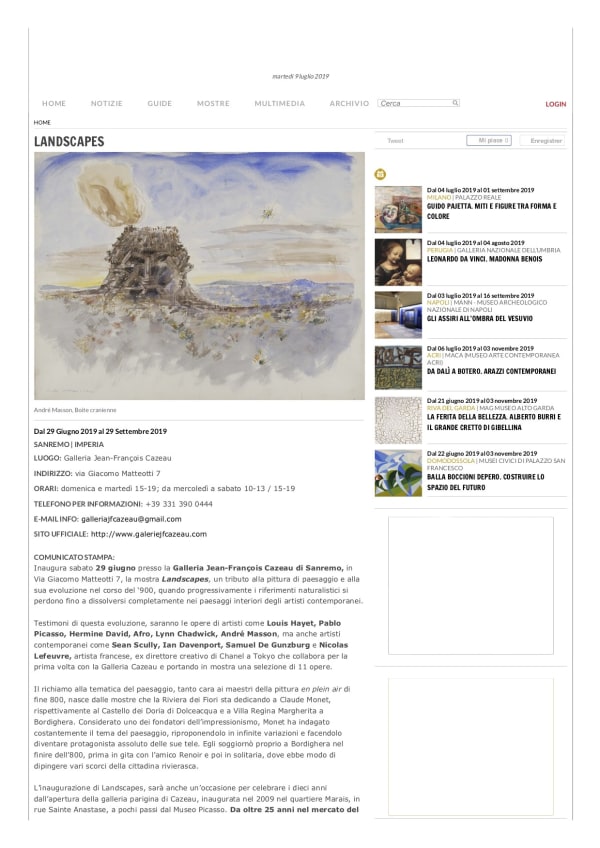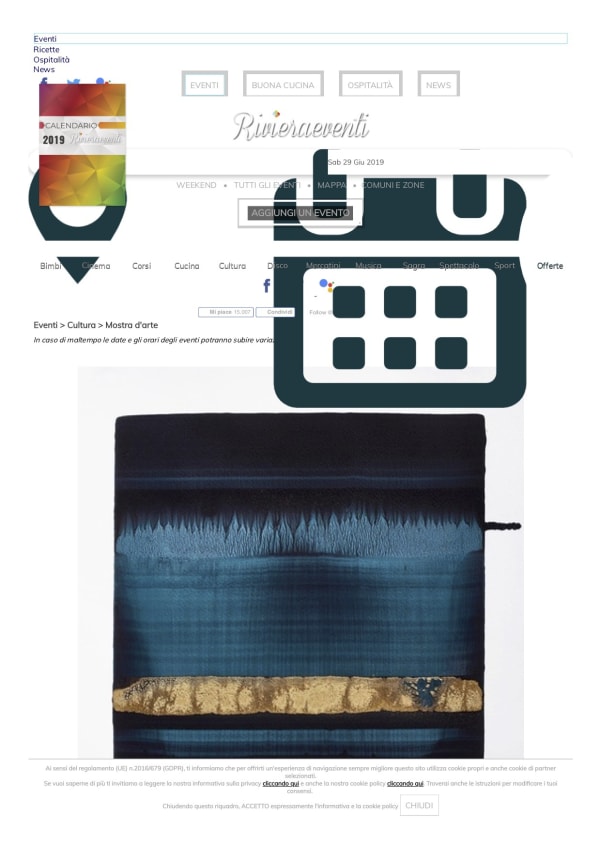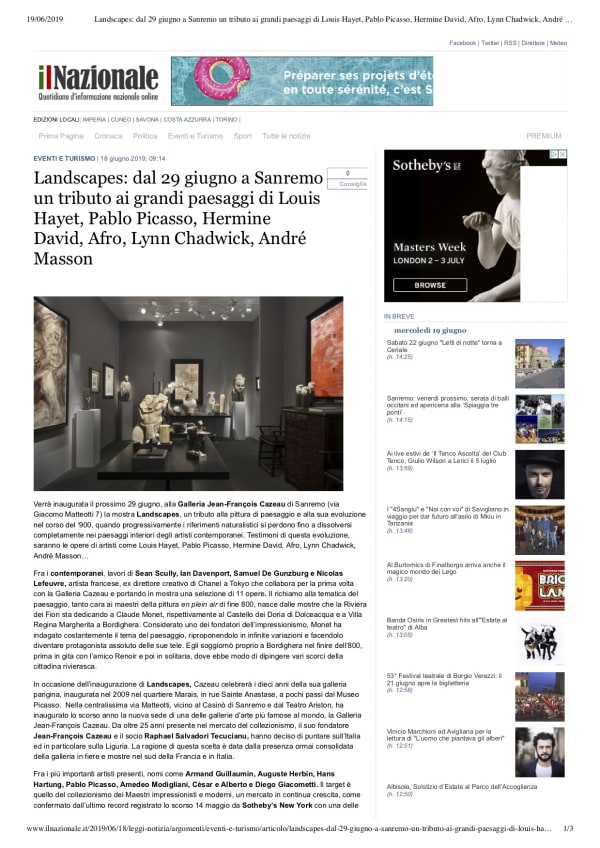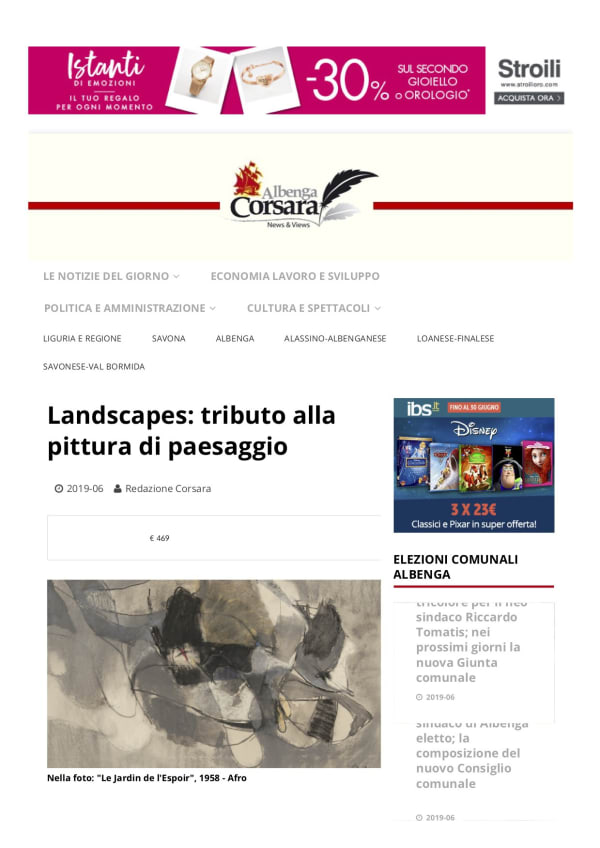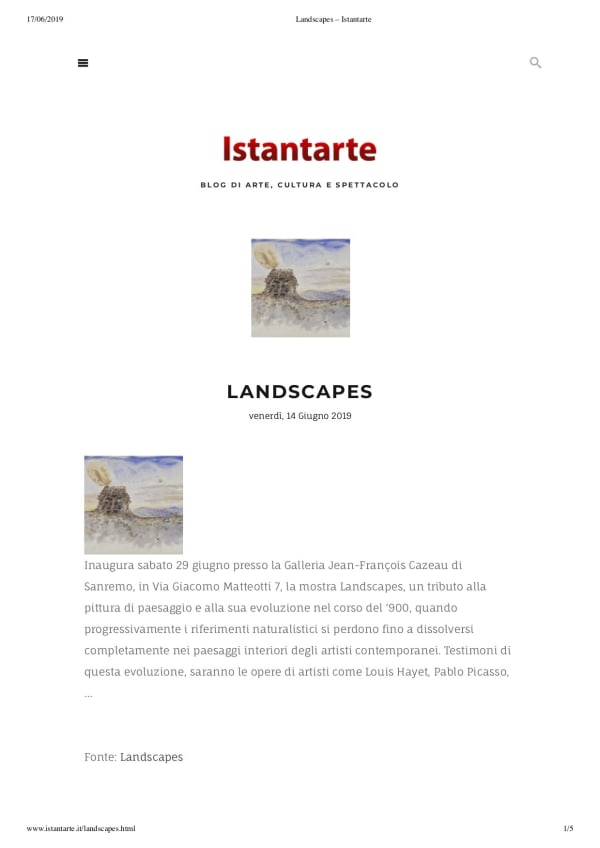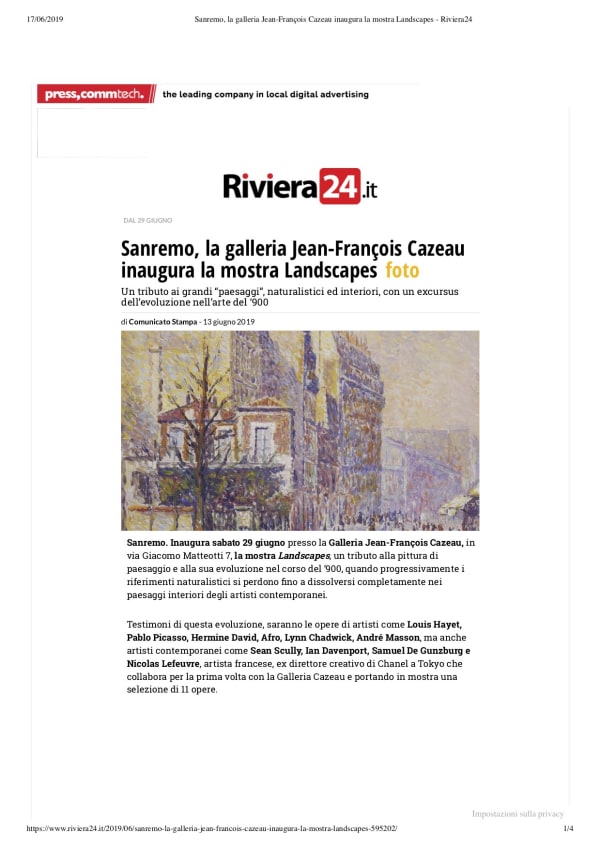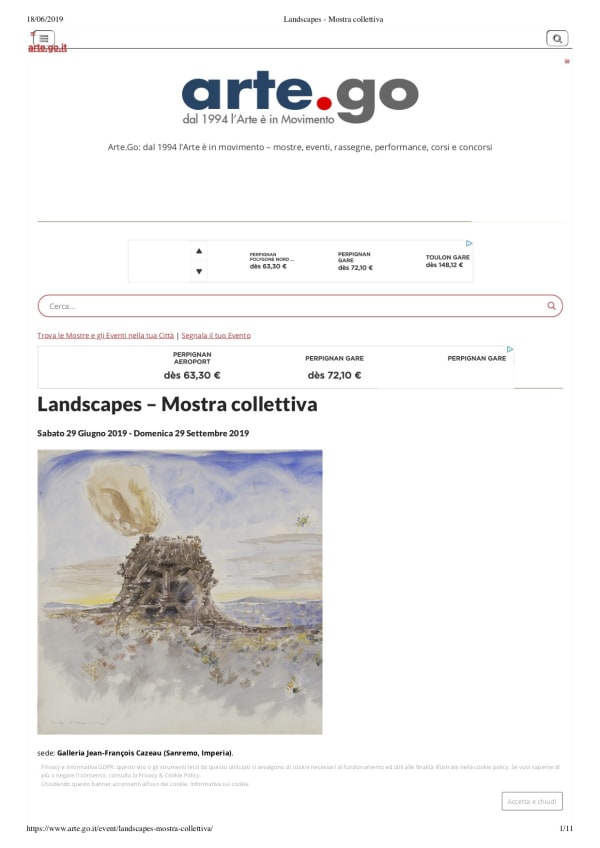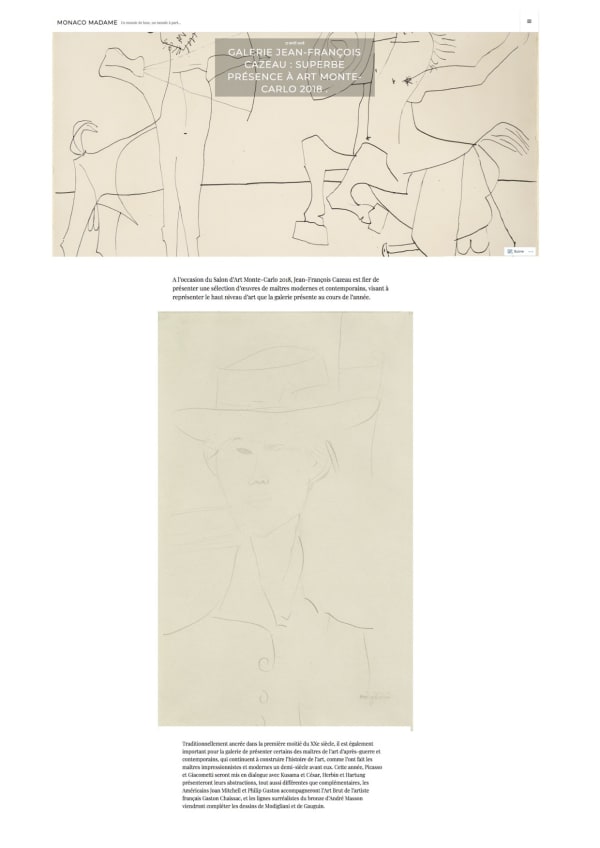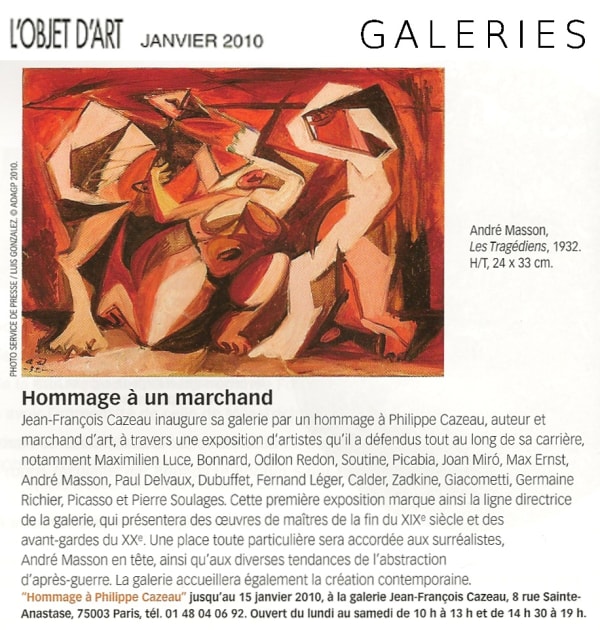André Masson French, 1896-1987
André Masson, born on January 4th, 1896, is a major figure of the surrealist movement and considered one of the fathers of automatism, as well as a strong influencer on the abstract expressionist movement which was born in New York during the 1940's.
Masson's career as a surrealist truly took shape in 1922, after he moved to the Atelier Blomet in Paris which became to the surrealists what the Bateau Lavoir was to the cubists. His close contact to Joan Miro took Masson's artistic production to an irrationallevel, one that he had not reached before. A couple years later, Masson became one of the most important artists to sign with Galerie Simon, the gallery of the famous dealer, Henri Kanhweiler. Masson's involvement with Kanhweiler and other artists of the gallery, notably Juan Gris, kept cubism essential to Masson's early surrealist works. With the likes of Joan Miro and Max Ernst, Masson always pushed the boundaries of experimentation by integrating various techniques, material and support into his production. In 1927, Masson he began experimenting with sculpture, using terracotta, clay and plaster.
Famous for his "automatic drawings" and his "sand paintings", he is marked - on an aesthetic level - by "the spirit of metamorphosis" and "the mythical invention" and - on an ethical level - by a visceral anti-conformism, including within the surrealist group from which he eventually moved away from.However, Masson remained a true surrealist: never throughout his artistic production did he abandon the surrealist aesthetics.
Having narrowly escaped death during the First World War, and being sensitive to the writings of Sade and his friend Georges Bataille, his work can be interpreted as an uncompromising questioning of human barbarity and perverse behavior. This preoccupation with all aesthetic considerations taking a primary role in his artistic language explains the role he plays in modern art by the fact that "he never cared to please."
His influence is mainly notable in New York during the Second World War, where he stayed after fleeing Nazi Germany. His paintings break with the classic pattern of figures standing out against a background in order to best symbolize the state of mental confusion that - according to him - governed his century. And his work served as a reference to founders of abstract expressionism, primarily with the painters Jackson Pollock and Arshile Gorky.
-
 André MassonMétamorphose, 1929Oil on canvas60 x 73 cmSigned on the back.
André MassonMétamorphose, 1929Oil on canvas60 x 73 cmSigned on the back. -
 André MassonLe Rapt, 1932Oil on canvas24.3 x 33.2 cm
André MassonLe Rapt, 1932Oil on canvas24.3 x 33.2 cm
Monogramed and dated on the lower left «AM -32-»
-
 André MassonL'entrée du taureau, 1937Oil on canvas26 x 67 cmSigned on the upper left corner
André MassonL'entrée du taureau, 1937Oil on canvas26 x 67 cmSigned on the upper left corner -
 André MassonLe Thé chez Franco, 1938Ink on paper45,5 x 58 cmSigned and dated lower left : André Masson 19 novembre 1938.
André MassonLe Thé chez Franco, 1938Ink on paper45,5 x 58 cmSigned and dated lower left : André Masson 19 novembre 1938.
Titled lower center : Le thé chez Franco -
 André MassonDans le pur néant. À la cîme de l'Être, 1939India ink on paper63 × 48 cmSigned on the lower right and titled on the reverse
André MassonDans le pur néant. À la cîme de l'Être, 1939India ink on paper63 × 48 cmSigned on the lower right and titled on the reverse -
 André MassonLe Labyrinthe, 1939-40India ink on paper48x 50Monogrammed by the artist on the lower right
André MassonLe Labyrinthe, 1939-40India ink on paper48x 50Monogrammed by the artist on the lower right -
 André MassonForêt: Martinique, 1941India ink on paper63 × 48 cmSigned, titled and dated by the artist on the lower right corner.
André MassonForêt: Martinique, 1941India ink on paper63 × 48 cmSigned, titled and dated by the artist on the lower right corner. -
 André MassonFemme tourmentée, 1942Bronze25,5 × 16 × 13 cmMonogrammé et numéroté, avec la marque du fondeur « AM / 3/6/ Valsuani Cire Perdue»
André MassonFemme tourmentée, 1942Bronze25,5 × 16 × 13 cmMonogrammé et numéroté, avec la marque du fondeur « AM / 3/6/ Valsuani Cire Perdue» -
 André MassonLe Loup-Garou, 1943Pastel and charcoal on paper61 x 45.5 cmSigned on the lower right corner.
André MassonLe Loup-Garou, 1943Pastel and charcoal on paper61 x 45.5 cmSigned on the lower right corner. -
 André MassonPaysage aux deux poissons, 1955Charcoal and pastel on paper.68 x 48 cmSigned on the lower left corner.
André MassonPaysage aux deux poissons, 1955Charcoal and pastel on paper.68 x 48 cmSigned on the lower left corner. -
 André MassonFête , 1956Oil on Canvas90 x 81 cmSigned on the lower left side "André Masson"
André MassonFête , 1956Oil on Canvas90 x 81 cmSigned on the lower left side "André Masson" -
 André MassonMartiniquaise, 1941Ink on paper30 x 22.6 cm (11 7/8 x 9 in.)Monogramed and signed lower right : a.m. 41
André MassonMartiniquaise, 1941Ink on paper30 x 22.6 cm (11 7/8 x 9 in.)Monogramed and signed lower right : a.m. 41 -
 André MassonPortrait de Peter Matisse, 1943Pastel on paper49 x 39 cm (9 3/8 x 15 3/8 in.)
André MassonPortrait de Peter Matisse, 1943Pastel on paper49 x 39 cm (9 3/8 x 15 3/8 in.)
Framed: 65 x 55 cmSigned on the lower left -
 André MassonSerruriers (Locksmiths), 1946Pastel, charcoal and ink on kraft paper.60.8 x 46.3 cm (24 x 18 ¼ in.)Stamp of the artist on the lower left. 1946.
André MassonSerruriers (Locksmiths), 1946Pastel, charcoal and ink on kraft paper.60.8 x 46.3 cm (24 x 18 ¼ in.)Stamp of the artist on the lower left. 1946. -
 André MassonJeux d'oiseaux, c. 1965Felt pen on tracing paper35 x 35.5 cm (13 ¾ x 14 in.)Signed on the lower left, "André Masson"
André MassonJeux d'oiseaux, c. 1965Felt pen on tracing paper35 x 35.5 cm (13 ¾ x 14 in.)Signed on the lower left, "André Masson"
-

La Figuration dans tous ses états : la figuration moderne au XXe siècle
11 Apr - 2 Jun 2025While abstraction represents the great paradigm shift of the 20th century, other artists rejected the academic and bourgeois tradition through figuration. While Cubism is considered one of the foundations of...Read more -

CSEDT: La Semaine de Galeries Parisiennes
Parcours de la Chambre Syndicale de l'Estampe, du Dessin et du Tableau 28 Nov - 8 Dec 2024Read more -

André MASSON: Le Surréalisme révolutionnaire
Parcours Paris Surréaliste 27 Sep - 21 Dec 2024 ParisCommitted and sensitive to the spirit of his time, the artist maintained fruitful artistic collaborations, notably with Georges Bataille. Masson's art is in continuous renewal. Claiming a “native disposition for...Read more
-
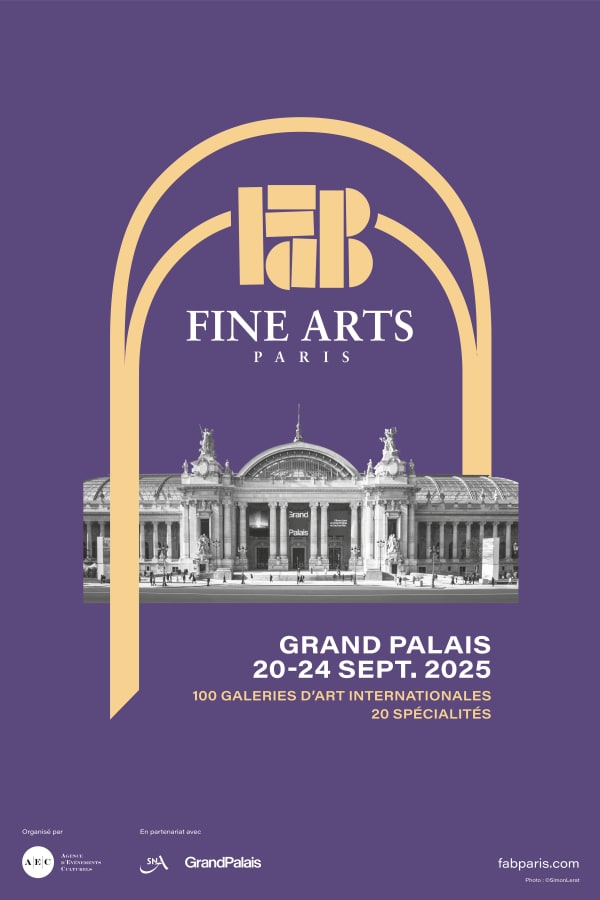
FAB 2025 : Fine Arts La Biennale
20 - 24 Sep 2025This year, for its second participation in FAB Paris, which will be held at the Grand Palais from 20 to 24 September 2025, the Galerie...Read more -

BRAFA Art Fair 2025
26 Jan - 2 Feb 2025As every year, the gallery is delighted to showcase its selection of Impressionnist and Modern works at the BRAFA Art Fair in Brussels, in an eclectic booth.Read more -
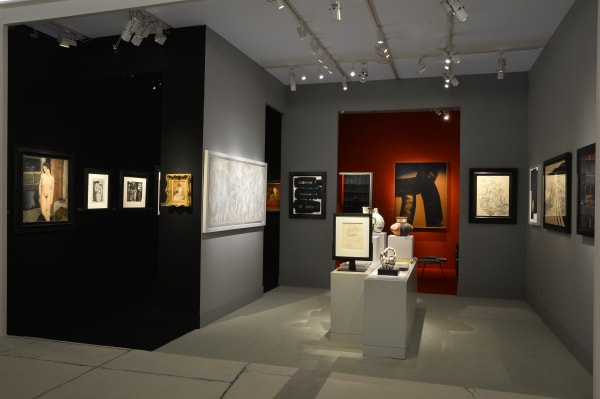
BRAFA 2024
28 Jan - 4 Feb 2024Galerie Jean-François Cazeau, located in the Marais district of Paris since 2009, builds bridges between the Modern Masters and post-war art on both sides of...Read more -

PAD Paris 2023
29 Mar - 2 Apr 2023ARTISTES présentés : César Baldaccini (1921-1998), Olivier Debré (1920-1999), Max Ernst (1891-1976), Leonor Fini (1908-1996), T’ang Haywen (1927-1991), Auguste Herbin (1882-1960), Wifredo Lam (1902- 1982), Fernand Léger (1881-1955), Nicolas Lefeuvre (1975-), Sol LeWitt (1928-2007), André Lhote (1885- 1962), André Masson (1896-1987), Henri Matisse (1869-1954), Joan Miró (1893-1983), Pablo Picasso (1881-1973), Niki de Saint-Phalle (1930-2002), Tom Wesselmann (1931-2004)Read more -
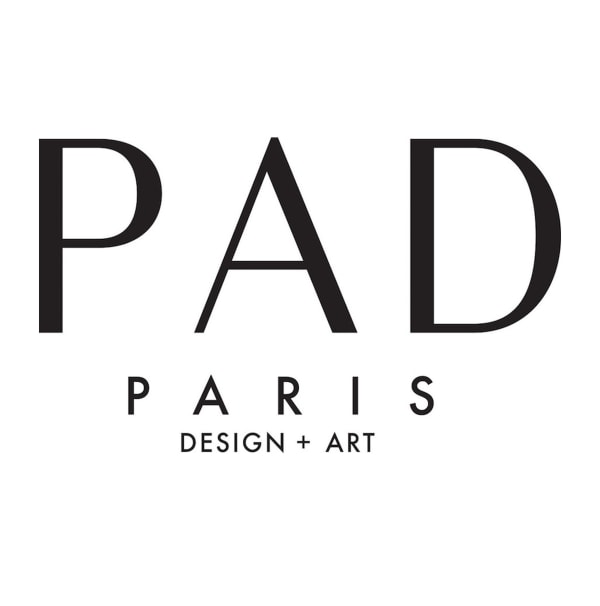
PAD 2022
Design + Art 5 - 10 Apr 2022Read more -
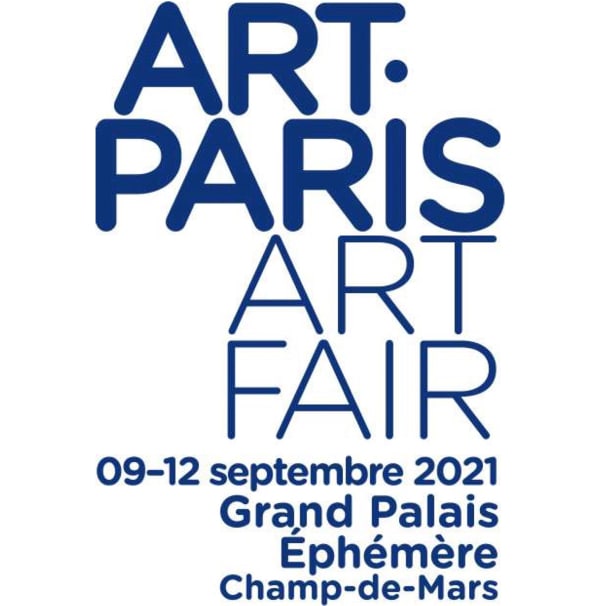
Art Paris 2021
9 - 12 Sep 2021The First Modern and Contemporary Art Fair to Take Up Residence in the Grand Palais Éphémère on the Champ-de-Mars Art Paris will be the first...Read more -
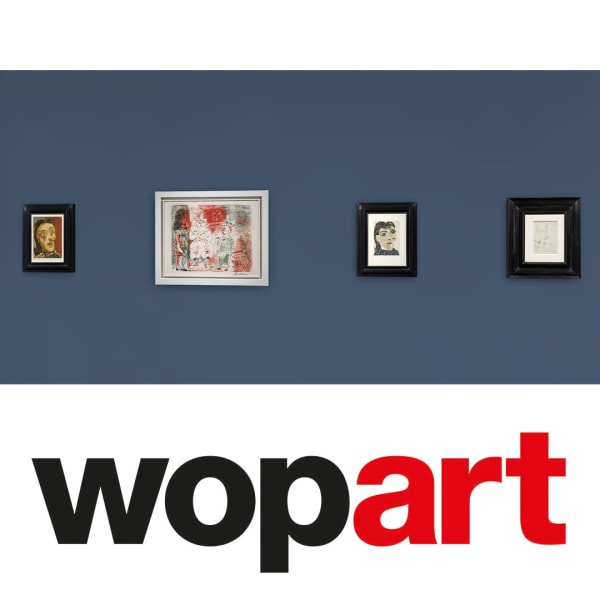
WOP Art
Work on Paper Fair, 5th Edition 26 Nov - 27 Dec 2020Galerie Jean François Cazeau is pleased to announce its participation in the fifth edition of WOPart, one of the most important fairs specialized in Modern...Read more -
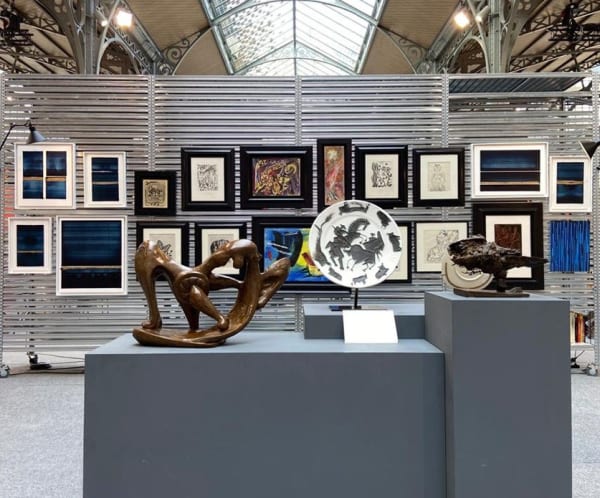
Galeristes
Le Pari(s) : Semaine de l'Art 23 - 25 Oct 2020Read more -

ART PARIS 2020
10 - 13 Sep 2020Art Paris 2020, the modern and contemporary art fair, is reborn at the Grand Palais from September 10 to 13. It will be the first...Read more -
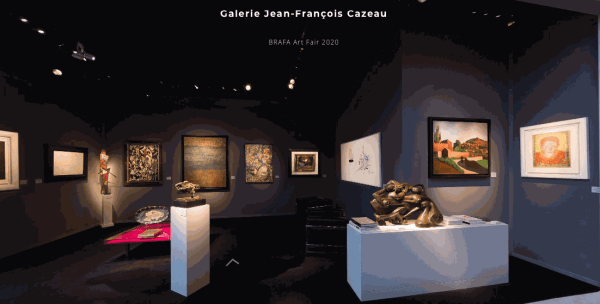
BRAFA 2020
26 Jan - 2 Feb 2020La Brafa est réputée pour la qualité haut de gamme des œuvres exposées, des antiquités à l’art moderne et contemporain en passant par les beaux-arts...Read more
-

ARTE.IT
July 9, 2019 -

RIVIERAEVENTI.IT
June 29, 2019 -

IlNazionale
June 19, 2019 -

REDAZIONECORSARA
June 18, 2019 -

Instantart
June 17, 2019 -

FIDEST
June 17, 2019 -

RIVIERA24.IT
June 17, 2019 -

ARTE.GO
June 16, 2019 -

LUSSOSTYLE.IT
June 14, 2019 -

MONACO MADAME
April 27, 2018 -

L'OBJET D'ART
January 15, 2010
